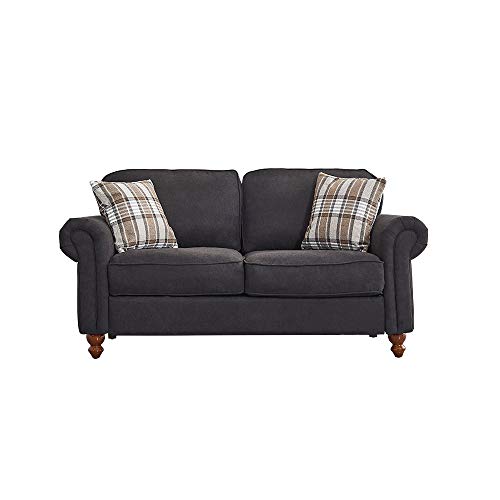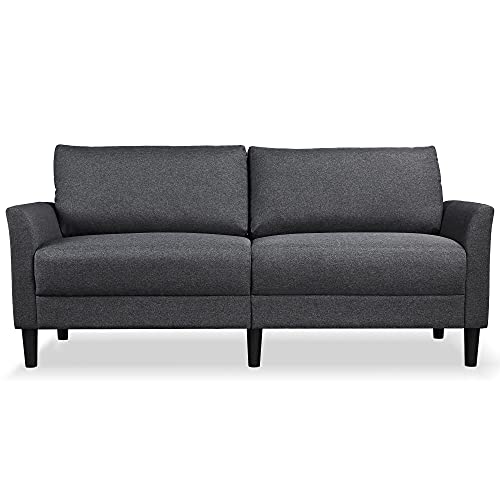Guide To 2 Seater Leather And Fabric Sofa: The Intermediate Guide The …
페이지 정보
본문
 Choosing Between a 2 seater fabric settee 2 seater sofa fabric leather and 2 seater fabric sofa uk sofa (visit our website)
Choosing Between a 2 seater fabric settee 2 seater sofa fabric leather and 2 seater fabric sofa uk sofa (visit our website)If you're shopping for a new sofa, it isn't easy to decide between leather or fabric. This is especially true for those who don't have a lot of furniture experience.
If you have kids or live in apartments the leather option could be a good fit for you. It's easy to clean and looks fantastic in a lot of homes.
Comfort
The sofa is usually the focal point in many people's homes and is a significant purchase. You want a sofa that is comfortable to lounge on for hours and looks good, is in line to your style and can last for a long time. The decision between Fabric 2 Seater Sofas or leather can be confusing It is crucial to consider your needs as well as your lifestyle and budget prior to making a decision.
Leather is a premium, luxurious material that exudes class and luxury in any home. It is tough and stain-resistant, as well as safe for pets and children, and will last for a long time with proper care. It can be expensive initially and may require regular conditioning to avoid cracking or peeling.
Fabric sofas are available in a variety of colours, styles and fabrics and can be a more affordable choice than leather ones. They are also softer and more cosy, with the ability to feel "broken in" right from the beginning. They can be prone to dust mites and pet hairs and may need more frequent cleaning. There are now hypoallergenic fabrics and new technology available.
2 seat fabric sofa sofas can last up to 15 years if they're maintained properly. Regular vacuuming and deep cleaning will keep the fabric free of stains, odours and dirt. Like leather, they are susceptible to sagging and flattening over time. Many fabric couches are treated with chemicals that make them stain resistant and flame-resistant. These can release volatile organic compounds that may affect indoor air quality and cause allergies.
Durability
When buying sofas, we often select fabrics that are extremely durable, as this is essential when you have pets or children. It's not necessary to invest a lot of money upfront when you're likely to regret it after the very first smudge or claw. You don't want a cheap item that won't hold up to everyday use.
Leather, meanwhile is extremely tough and has a remarkable tear strength. It can last for up to four times longer than fabric and is resistant to fading, cracking and flaking. It can also be conditioned to replenish its natural oils and look as good as new.
Fabrics are cheaper and come in a variety of patterns, colors and textures that can be adapted to any design scheme. Fabrics are less difficult to maintain and can endure some wear and tear. However, they can fade with time and are more prone to moisture.
Microfiber is durable and comes in a variety of colors. However, it may not be as sturdy as genuine leather. It might also not be able to withstand scratches. However, it's an excellent choice for families due to of its resilience to spills and stains, and it is easy to clean, generally with a damp cloth.
Suede however, is difficult to keep clean and can be even more difficult to repair than leather. It also can lose its shape if it is not regularly cleaned and may feel rough to the feel. It is also a very thin material and therefore may not be as tough as sheepskin or cowhide.
Allergens
The material the sofa is constructed of can have a significant impact on your allergies, which is why it's important to understand the various options that are available. Fabrics tends to retain allergens such as dust mites and pet dander, which can trigger symptoms such as asthma, hay fever eczema and rhinitis. This is because they act as an ideal environment in which they can thrive.
Leather on the other hand, is not prone to accumulating these allergens and provides constant comfort regardless of the season. However, it can also be a trigger for skin irritation, especially in those suffering from contact dermatitis and who are sensitive to the chemicals that are used in the tanning process. To prevent skin reactions, it's important to use vegetable-tanned products and keep a consistent routine for your skin.
Both sofas made of fabric and leather are robust, but the fabric you select will have a significant effect on how well your sofa holds up to wear. A good quality material will withstand shrinking or fading and can be able to withstand spills or body oils as well as daily use. Many modern fabric couches come with stain-resistant treatment to make cleaning easier.
It is not possible completely to prevent an allergic reaction to the leather of your couch but you can to reduce allergens by keeping an lint roller in the vicinity and clean regularly your living space. This will help to reduce the amount of dirt, pet hair and dust mites that gather on your sofa. If you are still suffering from allergies, you should consider swapping your sofa with a hypoallergenic model. For example, a sofa made of vinyl or synthetic leather is less likely to trap pet dander or dust mites. It will also make it easier to breathe.
Scratches
When buying a leather sofa, it is important to think about the amount of wear and tear you can expect from it. How long a sofa will last is contingent on the finish, colour and leather quality. Also, you must ensure that the couch is sturdy enough to stand up to spills and other messes. This can be accomplished by choosing a couch with a sturdy wooden frame and high-density foam cushions.
Leather can be damaged for many reasons, like stretching, marking territory or recovering the stress. Scratches vary in severity, from small surface scratches to large punctures and cuts. Minor scratches can be treated by applying a leather conditioner to the area affected. This will restore the equilibrium between moisture and oil within the leather and prevent it from drying out or cracking. The severity of the damage will determine the treatment required.
It is a good idea for cat owners to trim their cat's nails regularly. This will prevent them from scratching the couch. You can also redirect the scratching behavior by giving them alternative scratching surfaces, such as sisal rope or cardboard. Another option is using a pet-safe furniture polish, which can be applied using soft cloths on the affected area.
In addition to cleaning your leather couch regularly, it is also a good idea to keep it away from the direct sun and other sources of heat because this could dry out the leather. This could cause it to crack, which is usually difficult to repair and frequently requires the reupholstery. It is recommended to apply a leather conditioner to keep the leather soft.
Smell
A leather couch is known to have a slightly different scent than fabric. This is due to the fact that it's more porous and can absorb unwanted odors such as smoke, body odor, or food very easily. The good thing is that odors tend to fade over time, particularly when you employ a non-toxic, fragrance free cleaner.
If the smell is overwhelming it could indicate that something is wrong with the foam. This is typically caused by the chemical off-gassing that occurs in polyurethane that is derived from petroleum. If you're worried about this, look for couches made of CertiPUR US certified latex foams or natural latex.
A second way to identify faux leather is to feel for bumps or a texture on the back of a sofa. This is a sign that the leather is bonded and not authentic top grain. It is also possible to conduct an inspection by tilting the couch on its side to check if you see any exposed upholstery backing. If so see any, it's likely a synthetic material like polyester or polyurethane, which will have a distinct scent than genuine leather.
Cleaning your leather sofa on a regular basis can help keep it looking and smelling fantastic. This keeps it looking good and smelling great, as well preventing it from becoming brittle or cracked over the years. Start by vacuuming and dusting, then wiping the couch with baking soda (a natural method to get rid of smells). You should do this at least every two weeks or more to rid your sofa of any dirt and dust build-up. Then apply a leather conditioner to preserve the color and texture.

댓글목록
등록된 댓글이 없습니다.

